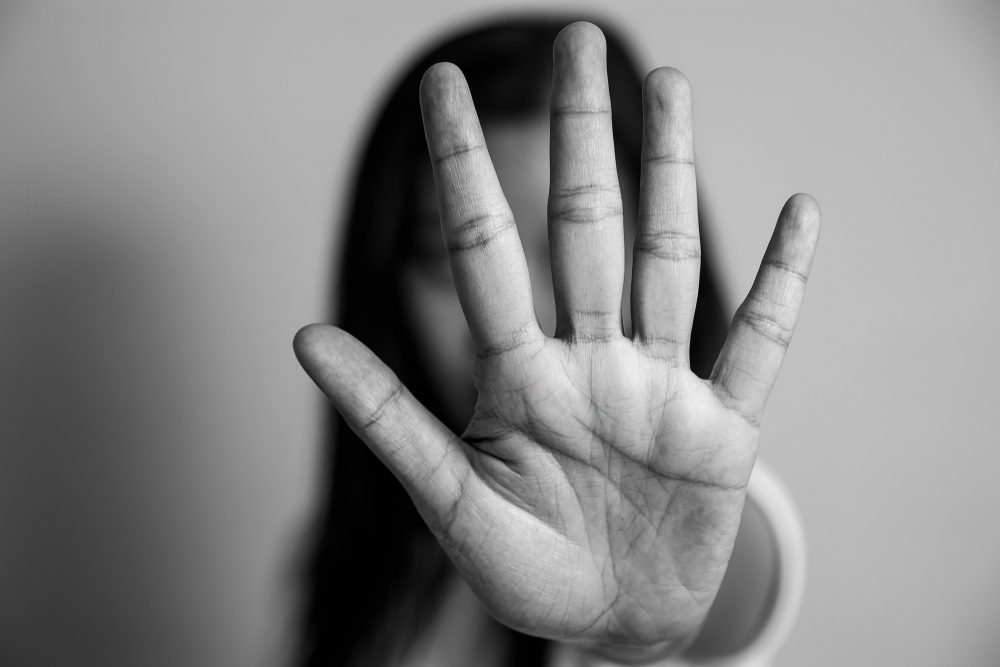- Combatting sexualised violence against children and youth
- Digital Shield: How children and youth in Europe are protected from sexualised violence in the digital sphere
- Negotiations on the directive on combatting violence against women and domestic violence
- Digital violence: how the violence continues online
- Istanbul Convention: Denmark, Finland and Austria in comparison
Combatting sexualised violence against children and youth
Sexualised violence against children and youth is steadily increasing. In 2023 alone, there were 1.3 million reports of sexualised violence against children and youth in the EU, including more than 3.4 million Child Sexual Abuse Material (CSAM). It is estimated that one in five children in Europe is affected by sexualised violence. Between 70 and 85 percent of those affected know the perpetrator.To mark the European Day for the Protection of Children against Sexual Exploitation and Sexual Violence on 18 November 2025, we have published a series of publications on the topic of "Combatting sexualised violence against children and youth in Europe".
This includes an Expertise presenting existing and planned EU measures to combat and prevent (digital) sexualised violence against children and youth. A comprehensive Overview (in German) presents criminal and family law provisions for protecting children and youth from online and offline sexualised violence in five EU Member States (Germany, France, Ireland, Sweden, and Spain). An accompanying Dossier provides a concise explanation of all aspects of the Europe-wide fight against and prevention of (digital) sexualised violence.
Digital Shield: How children and youth in Europe are protected from sexualised violence in the digital sphere
The EU has declared combating (digital) sexualised violence against children and youth a priority. Since this requires a holistic approach, various political and legislative initiatives are currently underway. One focus is on curbing digital violence, which knows no national borders.Digital technologies are further exacerbating sexualised violence against children and youth, particularly through the rapidly increasing use of AI. The internet offers perpetrators anonymity and numerous platforms where CSAM and instructions for abuse can be obtained, as well as where abuse can be committed against children and youth.
Negotiations on the directive on combatting violence against women and domestic violence
On February 6, 2024, the European Parliament and the Council of the EU agreed on a directive to combat violence against women and domestic violence. Difficult negotiations preceded the agreement: The Parliament welcomed the proposal for a directive submitted by the European Commission on March 8, 2022 and wanted to strengthen it even further, while the Council of the EU demanded some far-reaching changes. The biggest point of contention was the deletion of an EU-wide definition of rape, as demanded by the Council. The member states now have three years to transpose the directive into national law.Please note that the focus issue is only published in German.
Digital violence: how the violence continues online
Digital media has added a new dimension to violence against women. On the one hand, existing forms of violence against women find their digital equivalent. On the other hand, the anonymity and reach of the internet, as well as new contact possibilities via social media, allow new forms of violence to emerge.
In its work, the Observatory looks at European and national approaches to dealing with digital violence against women: How do the European Union and its member states approach this phenomenon of gender-related digital violence and its effects? Which national approaches and initiatives already exist?
Istanbul Convention: Denmark, Finland and Austria in comparison
In 2019/20, the Observatory focused its research on the subject of violence against women, specifically the implementation of the Istanbul Convention to protect and support women affected by violence.
The Istanbul Convention defines violence against women as a human rights violation. It is a manifestation of historically unequal power relations between men and women and should hence be viewed as a consequence of structural discrimination. The Convention covers all forms of violence.
The Istanbul Convention introduces a holistic approach that aims to improve the protection of women in Europe against gender-based violence and to create Europe-wide minimum standards. Specifically, the Convention sets out obligations for a coordinated approach to prevent violence, protect those affected by violence, prosecute perpetrators, and collect data.
Individuals affected by violence have the right to be protected by the state. Shelters provide legal and psychosocial support and advice. The facilities work together with authorities, courts and family assistance. In all three countries examined, shelters are open to people in acute emergencies.
Our Working Paper provides detailed insights into specialised support systems in three European countries. In a comparative approach, we examine the implementation of the Istanbul Convention in Denmark, Finland and Austria regarding the implementation of Article 22 (specialist support services), 23 (shelters) and 25 (support for victims of sexual violence).
In comparison, what are the similarities and differences?











